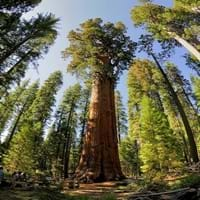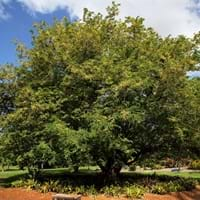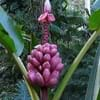Life Span
Perennial
Perennial
Origin
California
Africa, India, Southeast Asia
Types
Blue Iceberg, Cannibal, Muller
Sweet Tamarind, Australian tamarind, Manila tamarind, Velvet tamarind, Spanish Tamarind
Number of Varieties
Not Available
Habitat
Woodland Garden Canopy
Subtropical climates, Tropical regions
USDA Hardiness Zone
6-9
9-11
AHS Heat Zone
9-4
Not Available
Sunset Zone
1a, 1b, 2a, 2b, 3a, 3b, 4, 5, 6, 7, 8, 9, 10, 11, 14, 15, 16, 17, 18, 19, 20, 21, 22, 23, 24
Not Available
Habit
Upright/Erect
Spreading
Flower Color
Not Available
Red, Yellow
Flower Color Modifier
Bicolor
Bicolor
Leaf Color in Spring
Gray Green
Green
Leaf Color in Summer
Gray Green
Dark Green, Green
Leaf Color in Fall
Gray Green
Dark Green, Yellow green
Leaf Color in Winter
Gray Green
Dark Brown, Green
Leaf Shape
Awl-Shaped
Pinnate
Plant Season
Spring, Summer, Fall, Winter
Spring, Summer, Fall, Winter
Sunlight
Full Sun, Partial Sun
Full Sun, Partial Sun
Type of Soil
Clay, Loam, Sand
Clay, Loam, Sand
The pH of Soil
Acidic, Neutral
Acidic
Soil Drainage
Well drained
Average
Bloom Time
Not Available
Late Spring
Tolerances
Drought
Drought, Salt
Where to Plant?
Ground
Ground
How to Plant?
Cuttings, Seedlings
Layering, Seedlings, Transplanting
Plant Maintenance
Medium
Low
Watering Requirements
Requires large amount of water
Do Not over Water, Keep the ground moist but not water-logged
In Summer
Lots of watering
Lots of watering
In Spring
Moderate
Moderate
In Winter
Average Water
Average Water
Soil pH
Acidic, Neutral
Acidic
Soil Type
Clay, Loam, Sand
Clay, Loam, Sand
Soil Drainage Capacity
Well drained
Average
Sun Exposure
Full Sun, Partial Sun
Full Sun, Partial Sun
Pruning
prune to control shape
Remove damaged leaves, Remove dead branches, Remove dead leaves
Fertilizers
Apply 10-10-10 amount
6-6-6 or 8-8-8
Pests and Diseases
Grey mold, Root rot
Aphids, Borers, Mealybugs, Onion thrips, Root weevil, Soft scales, Whiteflies
Plant Tolerance
Drought
Drought
Flowers
Not Available
Showy
Flower Petal Number
Not Available
Single
Fragrant Bark/Stem
Yes
No
Foliage Texture
Fine
Bold
Foliage Sheen
Glossy
Matte
Attracts
Chickarees, Sapsuckers, White-headed woodpeckers
Beetles, Birds, Scale Insects
Allergy
Eye irritation, Skin irritation
Diarrhea, Hives, Nausea, Vomiting
Aesthetic Uses
Bonsai, Showy Purposes
Beautification
Beauty Benefits
Not Available
Glowing Skin, Good for skin, Improve skin tone, Reduces ageing, Skin cleanser
Environmental Uses
Air purification
Food for animals, Food for birds, Food for insects, Nesting sites for birds
Medicinal Uses
Not Available
Antioxidants, Inflammation, Rheumatism, Skin Disorders, Sore throat
Part of Plant Used
Wood
Flowers, Fruits, Leaves
Other Uses
Used for making fence posts, Used to make wood shingles
Culinary use, Used as a nutritious food item, Used as Ornamental plant, Used for its medicinal properties
Used As Indoor Plant
Yes
No
Used As Outdoor Plant
Yes
Yes
Garden Design
Shade Trees, Street Trees
Edible, Fruit / Fruit Tree, Shade Trees
Botanical Name
SEQUOIADENDRON giganteum
Tamarindus indica
Common Name
Giant Sequoia
Tamarind tree, Tamarind
In Hindi
Giant Sequoia
इमली का पेड़
In German
Giant Sequoia
Tamarinde
In French
Séquoia géant
tamarinier
In Spanish
Secoya gigante
tamarindo
In Greek
Giant Sequoia
δέντρο Tamarind
In Portuguese
Sequoia gigante
tamarindo
In Polish
Giant Sequoia
drzewo tamaryndowca
In Latin
Giant Sequoia
tamarind ligno
Phylum
Tracheophyta
Magnoliophyta
Class
Pinopsida
Magnoliopsida
Family
Cupressaceae
Fabaceae
Genus
Sequoiadendron
Tamarindus
Clade
Not Available
Angiosperms, Eudicots, Rosids
Tribe
Senecioneae
Detarieae
Subfamily
Sequoioideae
Caesalpinioideae
Number of Species
Not Available
Not Available
Season and Care of Giant Sequoia and Tamarind tree
Season and care of Giant Sequoia and Tamarind tree is important to know. While considering everything about Giant Sequoia and Tamarind tree Care, growing season is an essential factor. Giant Sequoia season is Spring, Summer, Fall and Winter and Tamarind tree season is Spring, Summer, Fall and Winter. The type of soil for Giant Sequoia is Clay, Loam, Sand and for Tamarind tree is Clay, Loam, Sand while the PH of soil for Giant Sequoia is Acidic, Neutral and for Tamarind tree is Acidic.
Giant Sequoia and Tamarind tree Physical Information
Giant Sequoia and Tamarind tree physical information is very important for comparison. Giant Sequoia height is 2,440.00 cm and width 670.00 cm whereas Tamarind tree height is 1,800.00 cm and width 800.00 cm. The color specification of Giant Sequoia and Tamarind tree are as follows:
Giant Sequoia flower color: Not Available
Giant Sequoia leaf color: Gray Green
Tamarind tree flower color: Red and Yellow
- Tamarind tree leaf color: Green
Care of Giant Sequoia and Tamarind tree
Care of Giant Sequoia and Tamarind tree include pruning, fertilizers, watering etc. Giant Sequoia pruning is done prune to control shape and Tamarind tree pruning is done Remove damaged leaves, Remove dead branches and Remove dead leaves. In summer Giant Sequoia needs Lots of watering and in winter, it needs Average Water. Whereas, in summer Tamarind tree needs Lots of watering and in winter, it needs Average Water.





